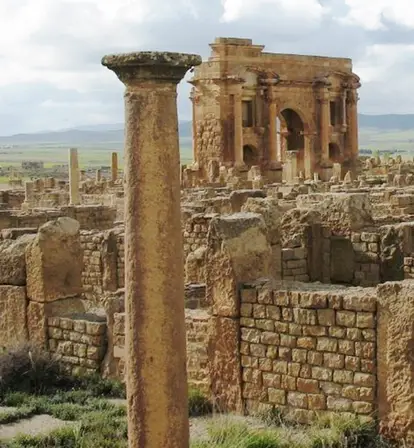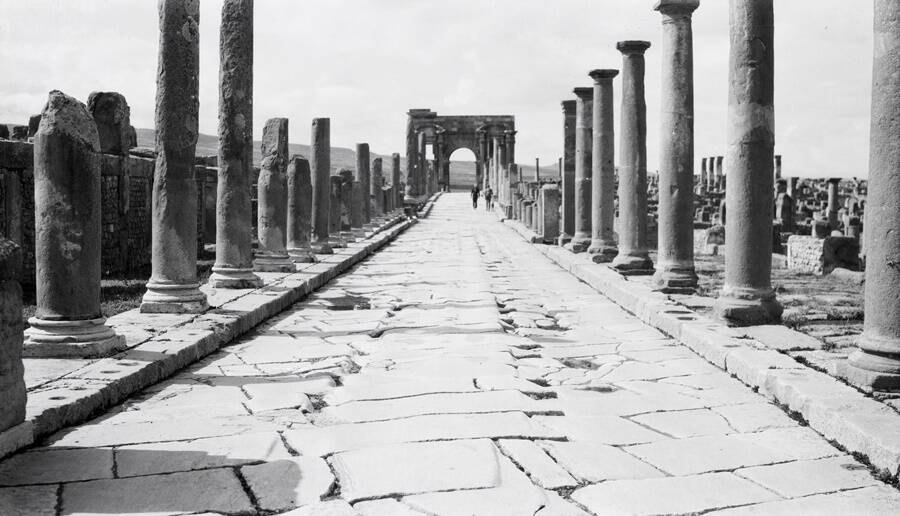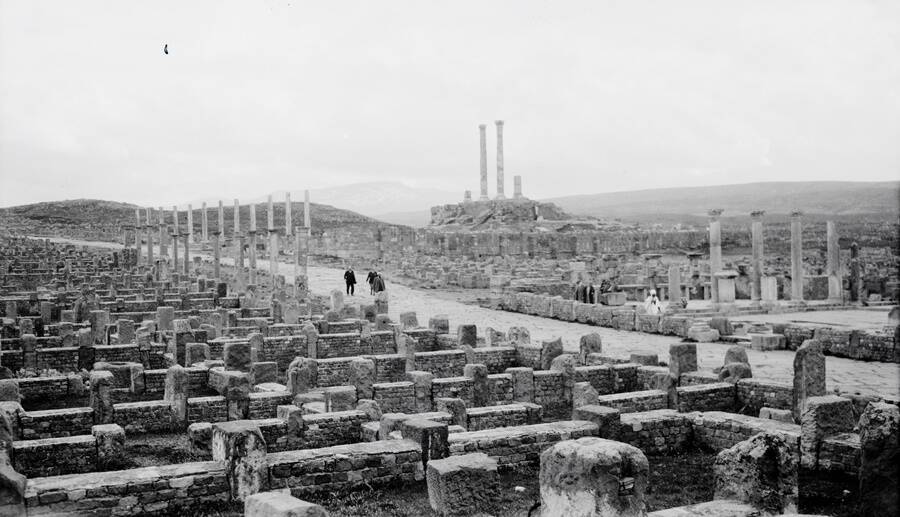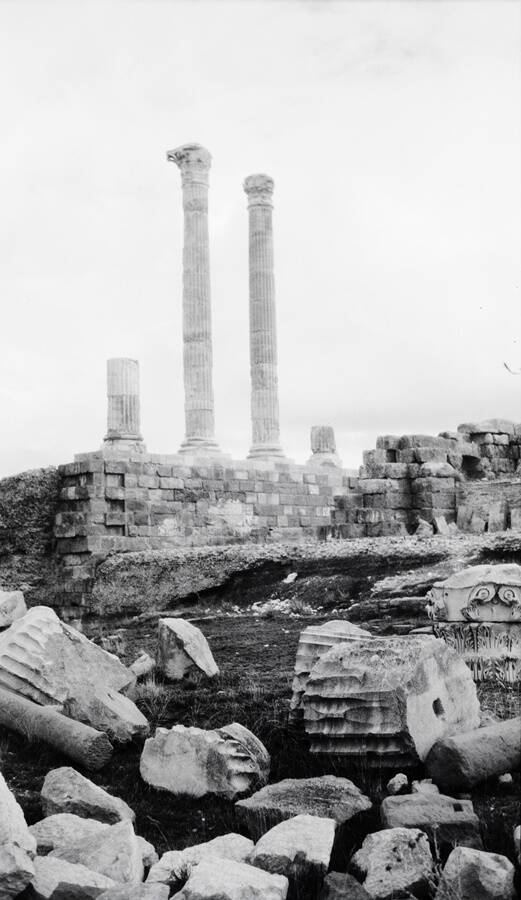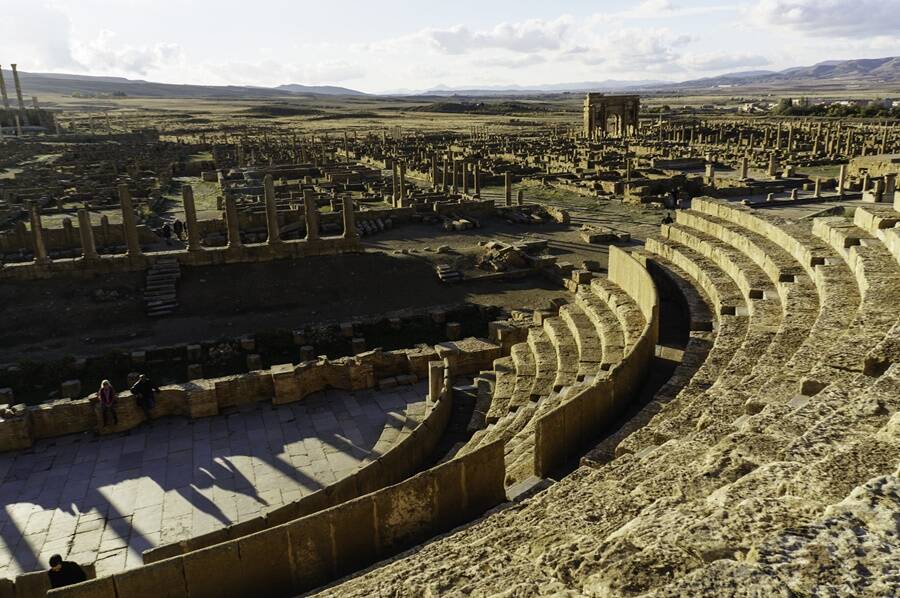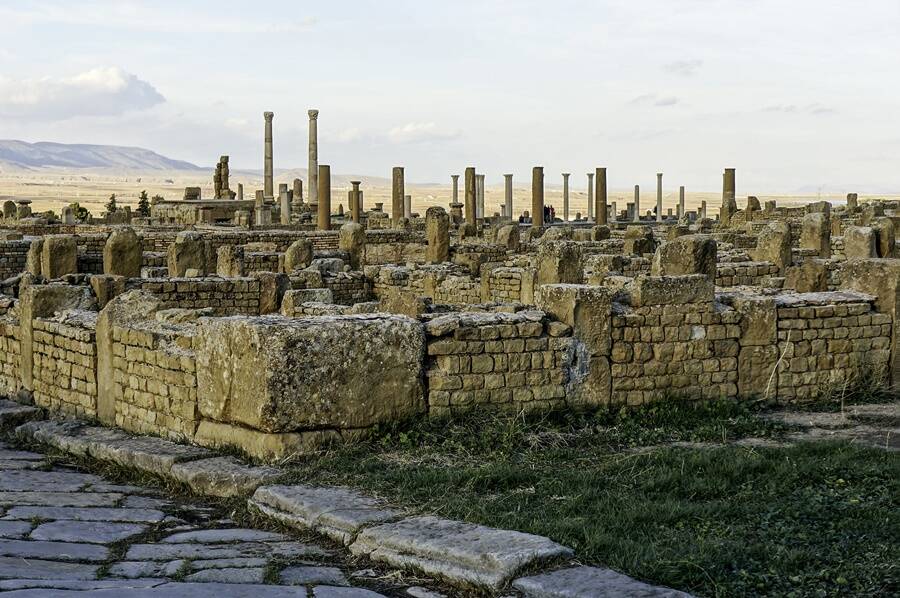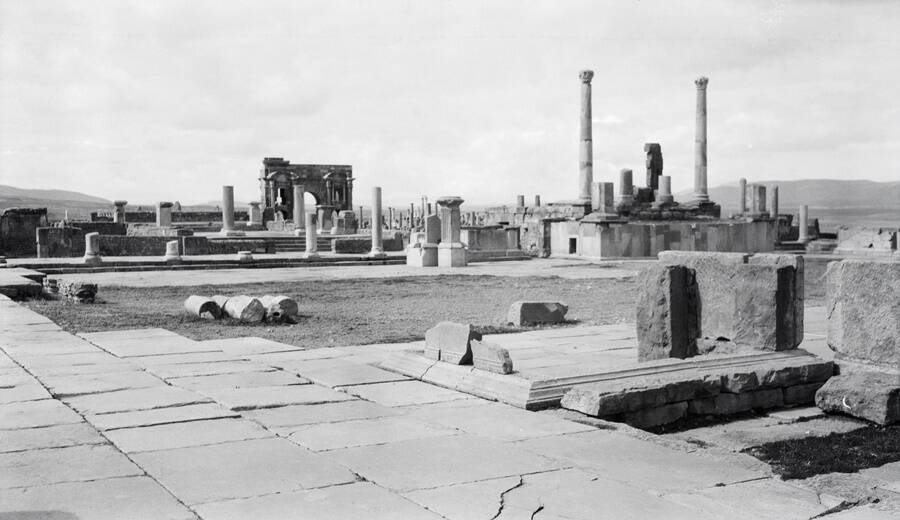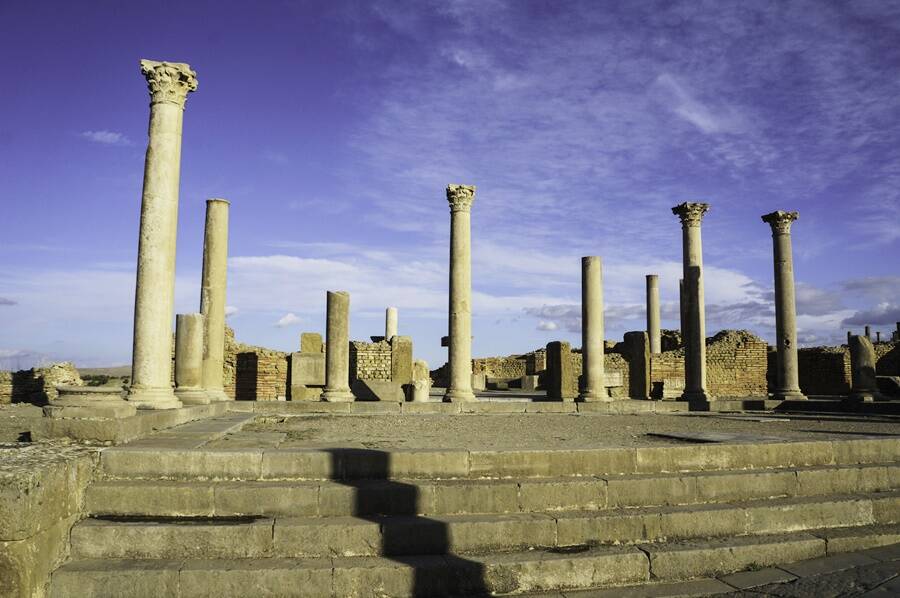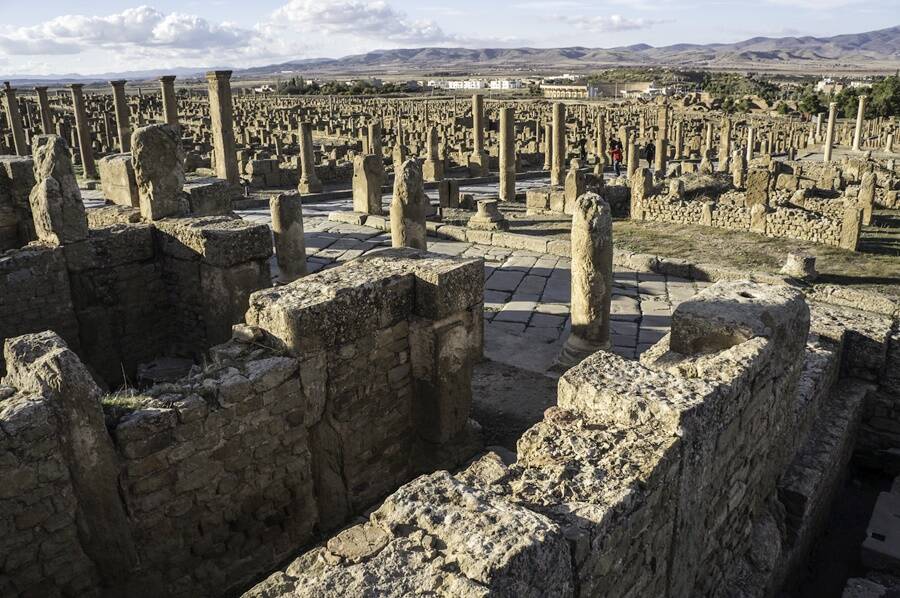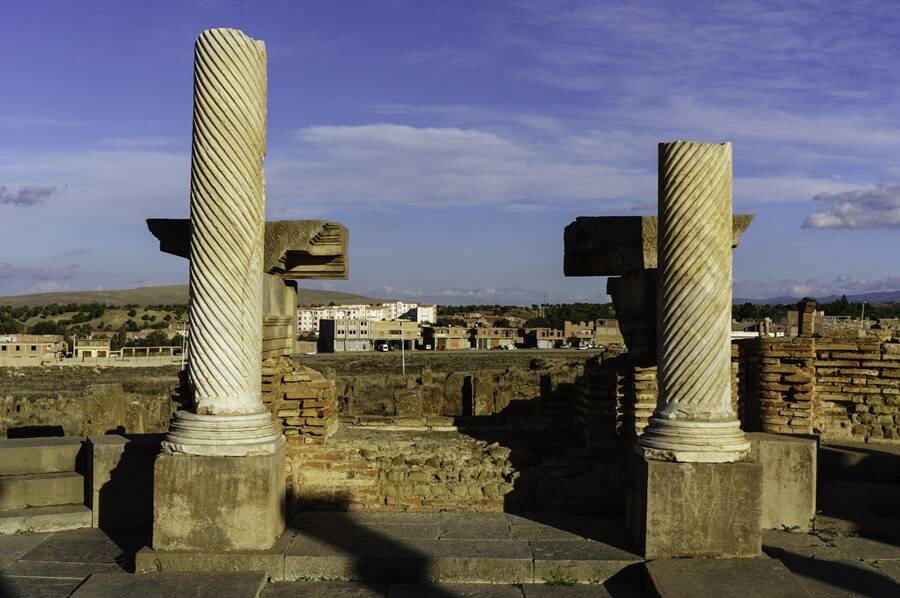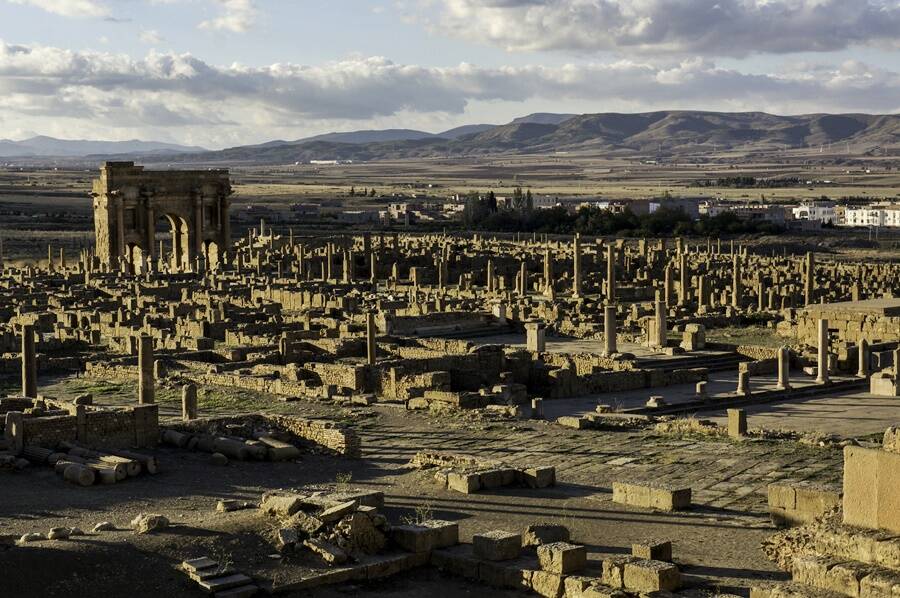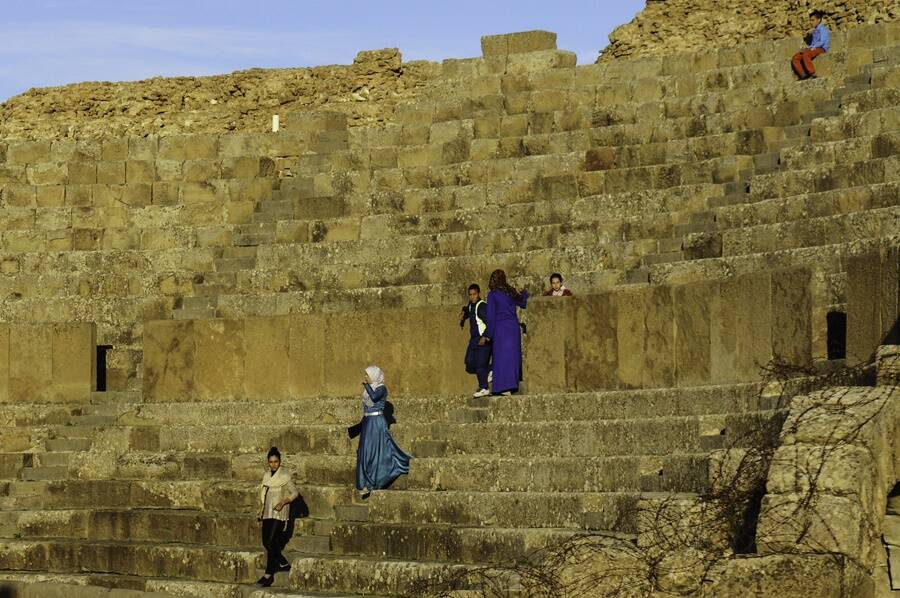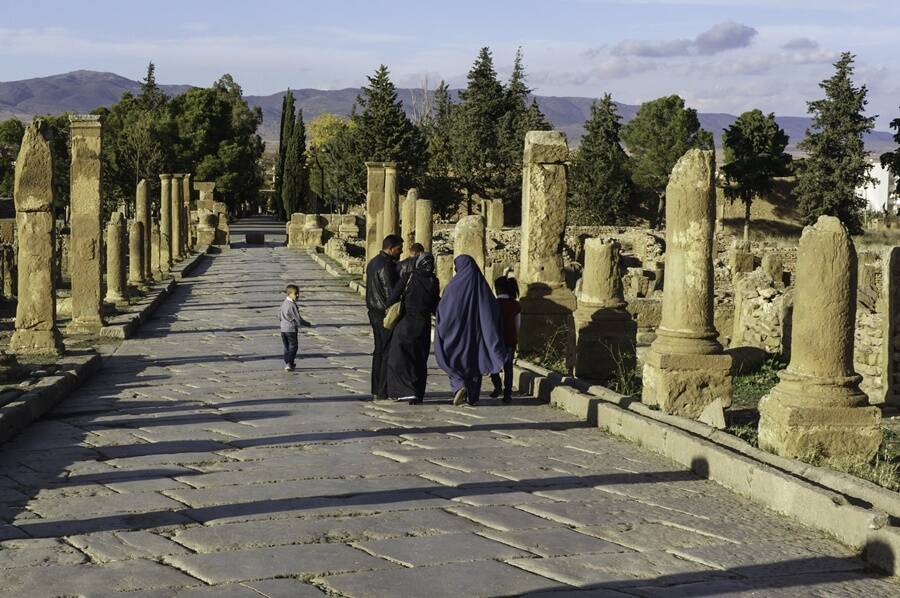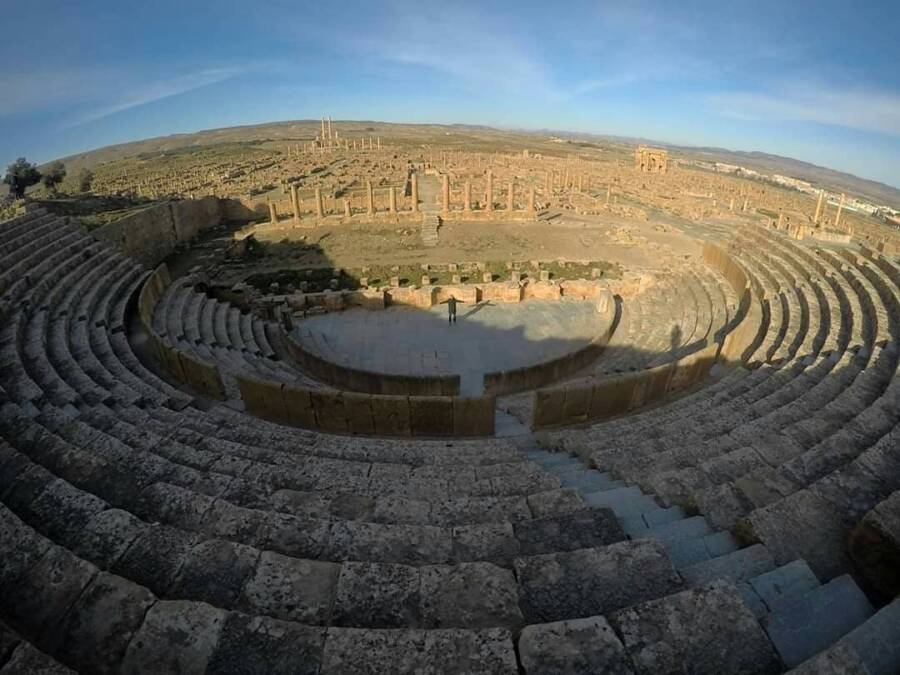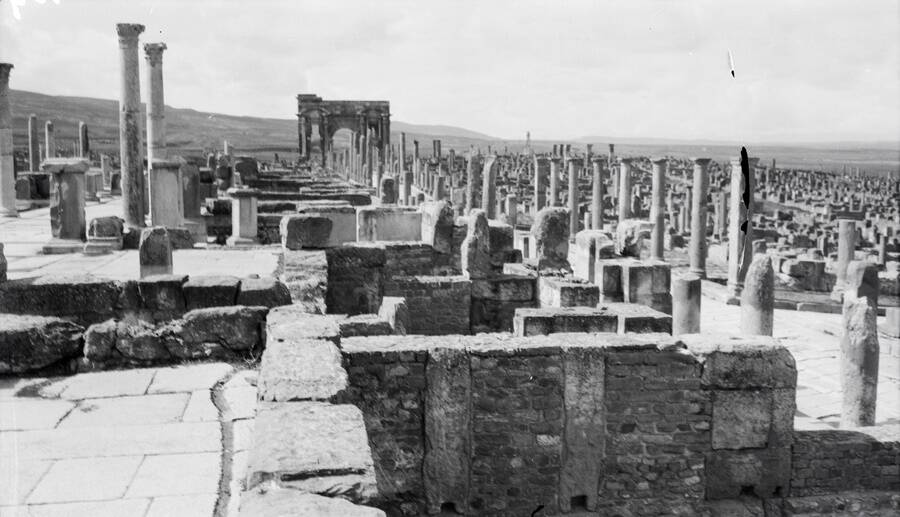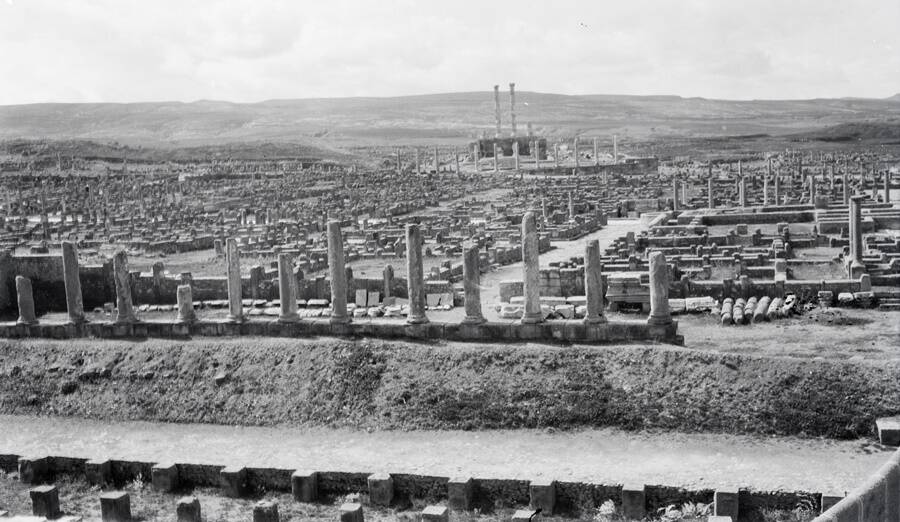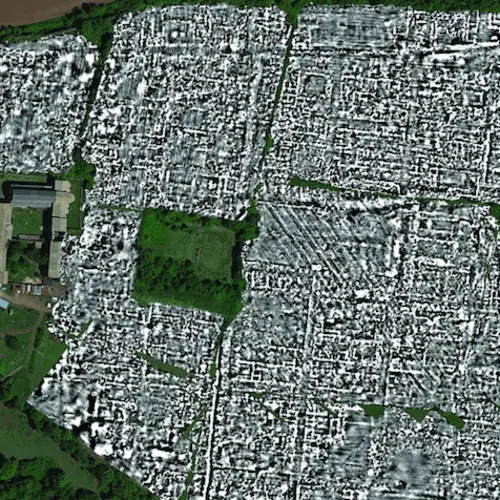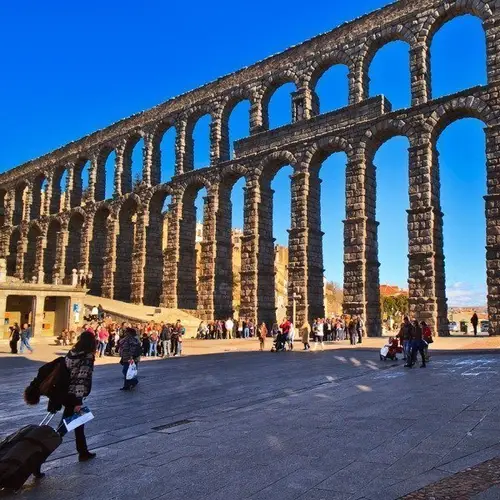The city of Timgad was built by Emperor Trajan in 100 A.D. Though it was sacked by Berber tribes shortly after Rome fell, its ruins still stand in Northern Africa today.
Before it was buried by the sands of the Sahara Desert, Timgad was a thriving colony of the Roman Empire. This bustling city was built by the Romans in their African territory — its grid layout a reflection of Roman urban planning at the time.
After the fall of the Roman Empire, Timgad was abandoned and forgotten. It wasn't until 1,000 years later that its ruins, largely preserved by the desert, were rediscovered. Indeed, the ruins of Timgad are so well-preserved that some visitors call it the Algerian Pompeii.
Explore the stunning remains of this once-bustling ancient metropolis.
Timgad: A Roman City In Africa
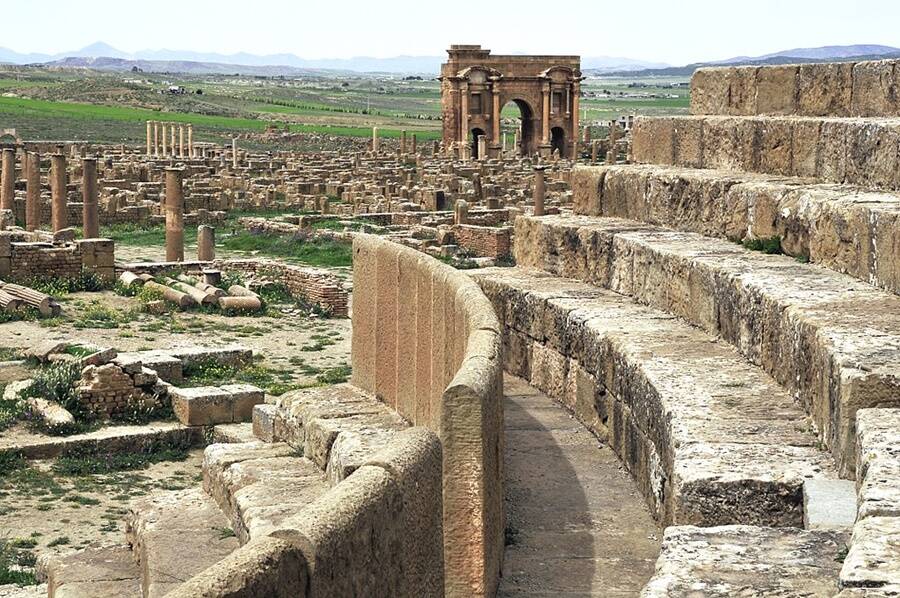
Wikimedia CommonsAfter its fall, the city of Timgad was buried in the Sahara Desert for 1,000 years before it was rediscovered.
The territory of the Roman Empire stretched beyond the borders of Europe, all the way to Africa. Timgad was one of the vast empire's colonial cities.
Built around 100 AD, Timgad was founded by Emperor Trajan, who ruled between 98 AD and 117 AD. The city was built in modern-day Algeria as "Colonia Marciana Ulpia Traiana Thamugadi" in memory of the emperor's mother Marcia, eldest sister Ulpia Marciana, and father Marcus Ulpius Traianus.
Today the site is also called Thamugas or Thamugadi.
Timgad's construction served two purposes. First, the Roman colony housed veterans of Trajan's mighty armed forces. Secondly, it functioned as a show of Roman power against the Indigenous Berber tribes that populated the northern and western regions of the continent.
After its founding, Timgad quickly became an important center of commerce and trade. Its residents enjoyed peace and prosperity for several centuries.
But the peace wouldn't last. Timgad's good fortune took a turn after it was ransacked by Vandals, Germanic people building their own kingdom in North Africa, in the 5th century.
The Vandal invasion led to economic instability in Timgad. The city also struggled with mismanagement by various Roman emperors, the lack of an independent army, and a loss of territory.
These factors led to Timgad's collapse.
A Marvel Of Ancient Roman Urban Planning
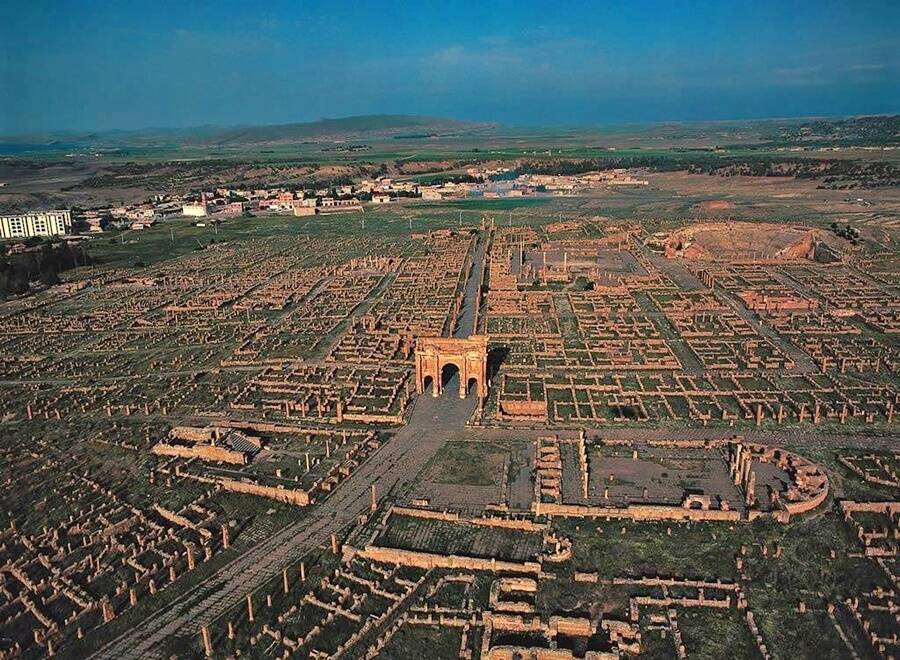
unesco_ancient_sites/InstagramTimgad's meticulously planned grid of city streets has been perfectly preserved by the desert sands.
The ancient city of Timgad boasted a number of temples and bathhouses, a variety of residences for different classes of society, as well as a forum area, a public library, markets, a theater, and a basilica.
There was no previous settlement on the grounds when Timgad was built, so it was constructed from scratch, using the Roman grid system. It has a perfectly square shape, with several major intersections inside the city allowing traffic to flow smoothly.
Like in all Roman cities, the street that ran north to south in Timgad was known as the cardo. The street that ran east to west was called decumanus. Unlike other typical Roman cities, however, Timgad's cardo did not cross through the entire length of the city. Instead, the street ended at Timgad's center, at its forum.
Timgad's forum area is another distinct urban detail used by the Romans. The Romans used forums as a public square where residents could buy or sell goods, or for other public gatherings.
Not far to the south of the forum was Timgad's theater. The theater was built around 160 AD and could seat about 350 people for each performance. The theater appears to have been cut directly from a nearby hill and, to this day, remains largely intact.
Two thousand years later, Timgad stands as one of the most remarkable archaeological sites in the world. Its advanced urban structure, though in ruins, remains an impressive sight to behold.
The Excavation Of Timgad
Timgad briefly revived as a Christian city when the Byzantines conquered its territory in the 6th century. But after Berbers sacked it in the 7th century, residents abandoned Timgad again.
Left unprotected, the Sahara Desert moved in and buried the city. Timgad wouldn't be discovered again until 1,000 years later when a team of explorers came upon the site while traveling through North Africa.
The rediscovery of the ancient city is largely credited to James Bruce, a Scottish nobleman who served as the British consul in Algiers — now the capital city of Algeria — in 1763.
Bruce left his consulate after an explosive disagreement with his superiors based in London. But instead of returning back to England, Bruce teamed up with Florentine artist Luigi Balugani and embarked on a trip across Africa.
Bruce and Balugani reached the site of Timgad on Dec. 12, 1765. They are believed to be the first Europeans to visit the site in centuries.
Bruce, enamored by the ruins of the vast city in the middle of the desert, wrote in his diary, "It has been a small town, but full of elegant buildings." Based on what he knew about North African history, Bruce was confident that the pair had found Emperor Trajan's long-lost city.
But when Bruce finally returned to London to share his incredible findings, nobody believed him. Undeterred, Bruce left for Scotland. He spent his retirement writing about his travels in Africa and his discovery of Timgad. Bruce's notes turned into a five-volume book titled Travels to Discover the Source of the Nile that was published in 1790.
It took another century before one of his successors, Robert Lambert Playfair, the new British consul to Algiers in 1875, retraced Bruce's steps in North Africa. Here, Playfair found Timgad. Even a century later, the city was largely preserved by the dry sands of the Sahara.
Subsequent excavations of the city led to its designation as a World Heritage Site by UNESCO in 1982. Many Timgad ruins still stand today, including its signature arch—known as the "Arch of Trajan"—and its theater, which still hosts the occasional concert.
Timgad is an enduring symbol of Roman history. This ancient site offers a rare look at how Romans lived centuries ago.
Now that you've explored the ancient ruins of Timgad, the Roman colony city in Africa, take a look at the most stunning Roman ruins outside of Italy. Next, check out 44 photos of African kingdoms before and after the invasion of European colonialists.
